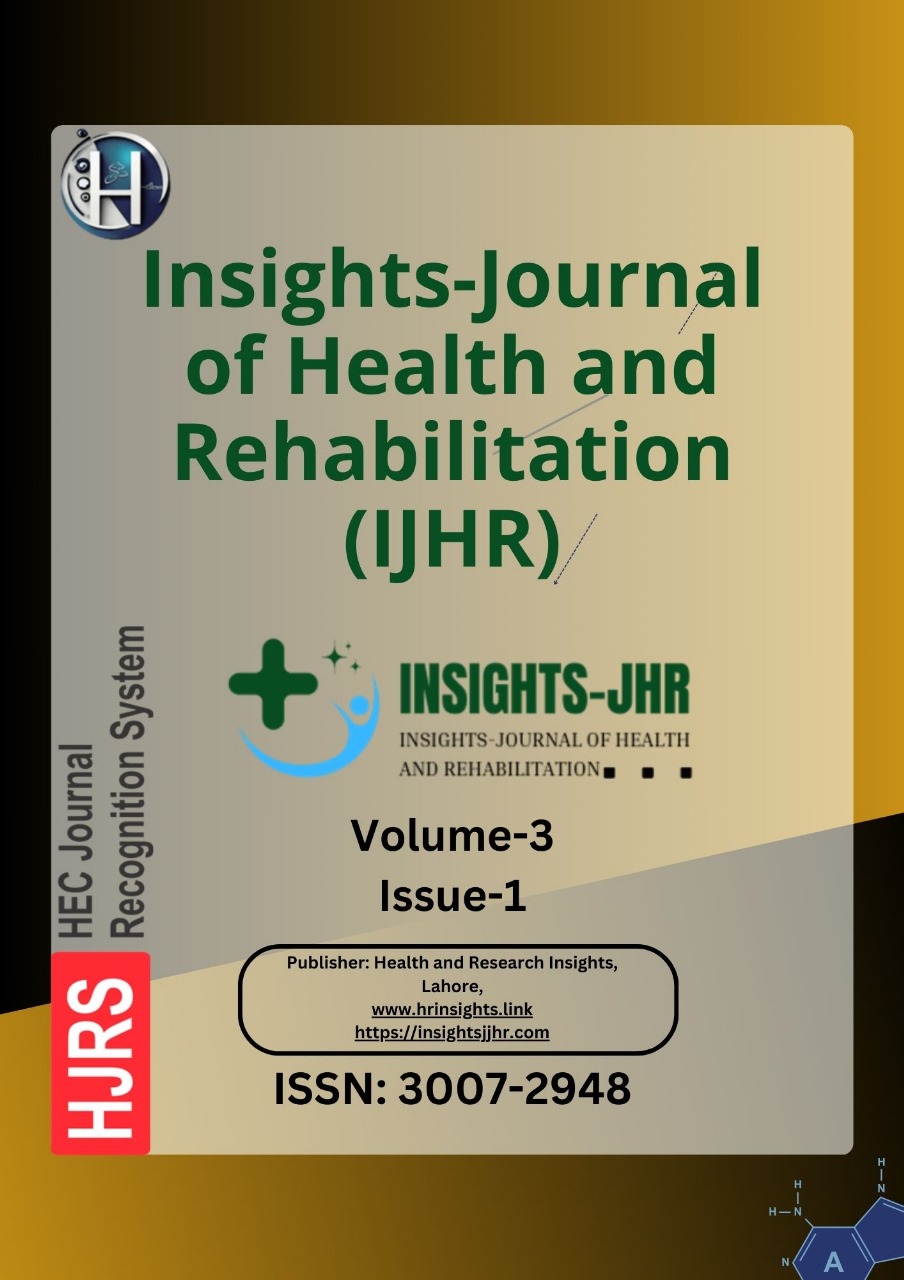FREQUENCY OF SCAPHOID FRACTURES AND ITS OUTCOME IN PATIENTS PRESENTING TO ORTHOPEDICS UNIT MTI GOMAL MEDICAL COLLEGE DERA ISMAIL KHAN
DOI:
https://doi.org/10.71000/9adv6w05Keywords:
Bone fractures, Carpal bones, Epidemiology, Fracture healing, Orthopedic injuries, Scaphoid bone, Wrist injuriesAbstract
Background: Scaphoid fractures are the most common carpal bone fractures, often resulting from falls on an outstretched hand. Due to its unique blood supply and anatomical structure, delayed diagnosis can lead to complications such as nonunion, avascular necrosis, and post-traumatic arthritis. Despite the prevalence of these fractures, there is a lack of comprehensive local data, leading to reliance on international literature that may not fully represent regional demographics, injury mechanisms, and healthcare accessibility.
Objective: To determine the frequency and clinical outcomes of scaphoid fractures in patients presenting to the orthopedic unit of MTI Gomal Medical College, Dera Ismail Khan.
Methods: This prospective cross-sectional study was conducted at the Department of Orthopedics, MTI Gomal Medical College, Dera Ismail Khan, from July 2, 2024, to December 25, 2024. A total of 115 patients of both genders, aged 18–60 years, presenting with wrist pain following hand trauma, were included. Patients with prior wrist injuries, arthritis, or minor avulsion fractures were excluded. Scaphoid fractures were diagnosed using CT imaging. Treatment varied based on fracture characteristics, with nondisplaced fractures managed conservatively and displaced fractures treated surgically. Functional outcomes were assessed using the Modified Mayo Wrist Score, classifying results as excellent (90–100 points), good (80–89 points), and poor (<80 points). Data were analyzed using IBM SPSS 26.0, with stratification performed based on demographic and clinical variables.
Results: The study population was predominantly male (73%). The mean patient age was 38.24±12.74 years, mean BMI was 26.24±3.01 kg/m², and mean fracture duration was 9.61±3.84 days. Scaphoid fractures were diagnosed in 16.5% (n=19) of cases. Among these, 68.4% had excellent outcomes, 26.3% had good outcomes, and 5.3% had poor outcomes. Stratification showed significant associations between scaphoid fractures and gender (p=0.028), fracture duration (p=0.017), socioeconomic status (p=0.001), education (p=0.002), and residential status (p=0.031), while treatment outcomes had no significant associations with demographic factors.
Conclusion: Scaphoid fractures, though relatively uncommon, require timely diagnosis and appropriate management to achieve favorable outcomes. The findings reinforce the importance of early intervention and standardized treatment protocols to minimize complications and optimize functional recovery.
Downloads
Published
Issue
Section
License
Copyright (c) 2025 Shahab Falak, Muhammad Shafiq, Irfan Khan, Zia Ullah, Maab Falak, Altaf Ahmad, Ahmad Daud, Muhammad Sani, Ahmad Mustafa, Naveed Ullah, Maarij Saleem (Author)

This work is licensed under a Creative Commons Attribution-NonCommercial-NoDerivatives 4.0 International License.







